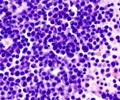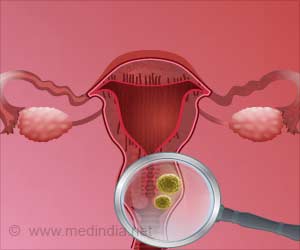St. Jude Children’s Research Hospital have found reasons as to why relapse of a particularly aggressive form of acute lymphoblastic leukemia (ALL)happens
St. Jude Children’s Research Hospital have found reasons as to why relapse of a particularly aggressive form of acute lymphoblastic leukemia (ALL) happens. The targeted therapy drug imatinib (Gleevec™), was revolutionary in the treatment of chronic myelogenous leukemia (CML), but it was unable to prevent a relapse. Targeted therapy drugs is meant to make treatments more effective and less toxic as they are designed to block the activity of a specific molecule. The study revealed that loss of Arf gene in presence of BCR-ABL mutation leaves all cells susceptible to the growth-enhancing surroundings of the bone marrow, helping cells develop immunity to the anti-leukemia drug imatinib.
The findings may shed new light on why a small percentage of children with ALL do not benefit from treatment, while more than 90 percent of children treated with the latest therapies survive. The discovery could also help researchers better understand both the origins of this form of aggressive ALL as well as why it becomes resistant to imatinib; and this knowledge may lead to more effective treatments for patients who are not helped by current therapies.CML and an aggressive form of ALL share the same critical mutation—the Philadelphia chromosome (Ph). Cells that have this mutation (Ph+ cells) produce a rogue growth-promoting enzyme called BCR-ABL. Now, work by a team headed by Charles J. Sherr, M.D., Ph.D., a Howard Hughes Medical Institute investigator and co-chair of the St. Jude Department of Genetics and Tumor Cell Biology, has shown that these two forms of leukemia part company in a crucial respect.
“Many Ph+ ALL cells lack a tumor-suppressor gene called Arf, which is normally present in CML cells at the time the disease is first diagnosed,” said Sherr. Stripped of the anti-tumor effects of Arf and nurtured by growth factors produced in the bone marrow, these ALL cells become less responsive to imatinib and more difficult to eliminate. Sherr reasons that the cells’ survival advantage increases their opportunity to develop mutations in the BCR-ABL protein, which prompt imatinib resistance.
A report on these results appears in the September 15 issue of “Genes & Development.”
“The findings of the study not only suggest why Ph+ ALL is often insensitive to imatinib, but also imply that doctors might identify patients at high risk of failing this treatment by determining whether their leukemic cells lack the Arf gene,” said Richard T. Williams, M.D., Ph.D., an assistant member in the St. Jude Department of Oncology and the paper’s first author. “The development of drugs that also block the ability of other factors in the bone marrow to sustain the leukemic cells should render them more susceptible to imatinib and improve the outcome of ALL patients who are resistant to current forms of therapy.” Discovery of the Philadelphia chromosome in the 1960s represented the first identification of a chromosome abnormality found in a specific kind of cancer. Ph+ ALL occurs in about 30 percent of all adult, but in only 4 percent of childhood cases. Its presence signals that patients of any age will likely have poor outcomes.
This study strongly suggests that a widely held explanation for how leukemias arise is not universally applicable. “This view holds that leukemias arise from rare ‘cancer stem cells,’ which do not make up the bulk of the tumor, but are the only cells required to regenerate the cancer after treatment,” Williams said. “However the new St. Jude study reveals that the combination of BCR-ABL activity and inactivation of Arf are sufficient to generate a uniform population of leukemia-initiating cells—any one of which can expand and induce rapidly fatal disease. Rather than comprising only a rare minority of cancer stem cells, each of these ALL cells is able to trigger and propagate the disease, so an effective therapy has to prevent the multiplication of each and every one of them.”
BIN/C








